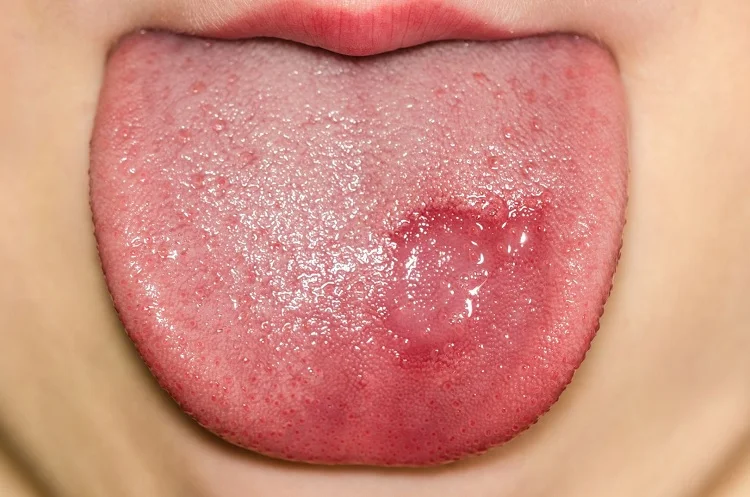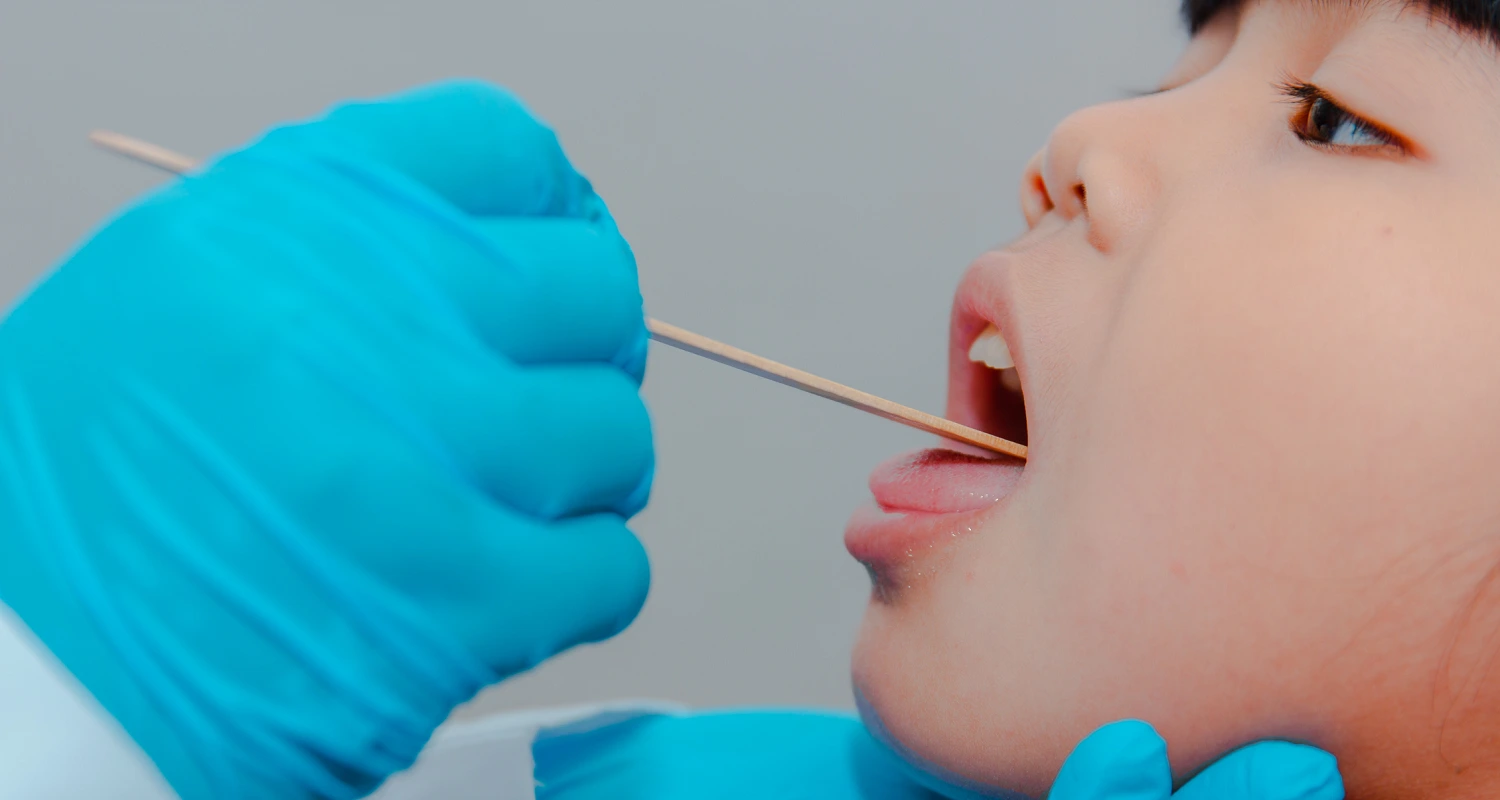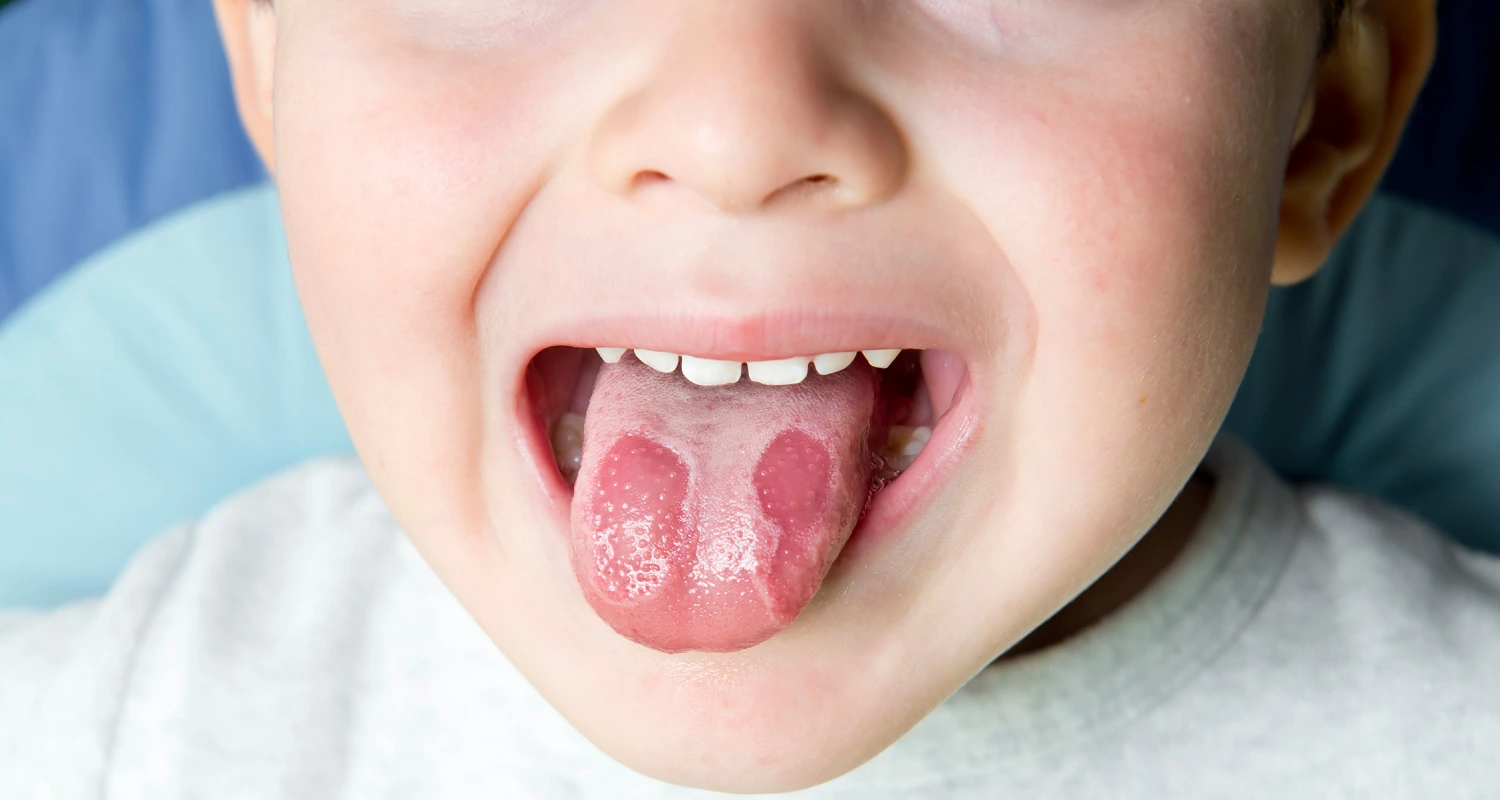Last Updated on: 19th September 2025, 12:51 pm
Treatment for Geographic Tongue: A Complete Guide
This article will explain the proper treatment for the geographic tongue, how it is diagnosed, if it is possible to prevent it, and general care for those who present the condition.
Geographic tongue, also known as benign migratory glossitis, is a condition in which smooth, red, whitish-edged, map-shaped, or island-shaped spots are seen on the upper surface and/or sides of the tongue. These spots appear and disappear by themselves; each time they manifest, they change location, shape, and size.
How is Geographic Tongue Diagnosed?
Geographic tongue is not a dangerous condition, but it is very uncomfortable, as burning or pain is felt when consuming acidic, hot, or spicy foods. A sensation of discomfort, in addition to the odd appearance of the tongue, are determinants for a correct diagnosis.
Normally, this condition is recurring from time to time, but it should not last more than 10 days. If it goes beyond this timeframe, it may indicate a different condition.
During a routine dental visit, the dentist will assess how the upper surface of the tongue looks and feels. He or she will ask a series of questions such as: How long have you had these sores and the discomfort? How often do they appear? What causes them? The answers will help in making a differential diagnosis and serve to rule out allergies or lesions similar to a geographic tongue.
Some of these injuries or illnesses are:
• Candidiasis: With this fungal infection, spots appear, and when they are removed, a reddish surface remains.
• Leucoplasia: This condition manifests as thick white spots that cannot be removed.
• Lichen planus: White or red spots in the form of a network on the tongue and/or other tissues of the mouth.
• Lupus erythematosus: White or reddish lesions in the mouth and on the skin in other parts of the body.
• Herpes bucal: Blisters that commonly occur on the lips.
• Average rhomboidal glossitis: In the middle area of the tongue a smooth and red spot is observed.
• Fissured tongue: Grooves are seen on the surface of the tongue, and when food gets stuck in them, they look like whitish or brown spots.
• Traumatic injuries: A blow, fall, or cut, among others.
Can Geographic Tongue be Prevented?
The initial onset of this condition cannot be prevented, but it is possible to improve the discomfort of the geographic tongue by avoiding foods that cause or increase irritation such as acids, and hot or spicy items.
What is the Treatment for Geographic Tongue?
There is no treatment for geographic tongue, despite the benign, uncomfortable, and annoying lesions. Do not cause damage to other oral tissues or the rest of the body.
In addition to avoiding the consumption of foods that increase irritation of the tongue, the following recommendations can help:
• Oral hygiene: Follow a routine oral cleaning that includes brushing the tongue to remove remaining food debris. To learn more about perfecting your oral hygiene, feel free to check this article.
• Controlling stress: A person with this condition is likely to feel anxious or stressed, but it must be remembered that these lesions are harmless and just a variation of the normal state of the tongue. Symptoms do not indicate a disease in the body.
• Control bad habits: The use of tobacco or the intake of alcohol can irritate conditions, so reducing their consumption alleviates the discomfort.
• Visit the dentist: In addition to diagnosing this condition, your dentist may prescribe medications such as pain relievers, B vitamin supplements, steroid creams, numbing mouthwashes, or antihistamines to decrease any discomfort caused by geographic tongue.
Remember that drugs must be prescribed by a specialist in the area to achieve effective results and avoid risks associated with their use.
In each case, the dentist evaluates the patient and recommends or prescribes what suits each specific case. Geographic tongue is a harmless and uncomfortable condition. It is advisable to follow the recommendations described to avoid discomfort and complications.
It is possible to feel anxious or scared when presenting this condition, but keep the following in mind to help cope with anxiety:
• The geographic tongue shouldn’t hurt: Normally the condition is asymptomatic; in case of discomfort, the typical sensation is burning, but not pain.
• It is not contagious: This condition can be hereditary, but it cannot be passed on to other people.
• Geographic tongue is chronic and has no cure: The lesions appear intermittently throughout life, disappear completely, and reappear sometime later.
• You can eat normally: Generally, all types of food can be consumed, but upon occasion, when the lesions cause discomfort, it is advised to avoid hot, spicy, and acidic foods.
• Geographic tongue is a benign lesion: It does not cause general health problems, nor is it associated with infections or malignant diseases.
Finally, you have to remember that you can have a normal and full life living with this condition.
If you want to know more about geographic tongue, the causes and signs, and symptoms, you can find an article that expands this information on our website.
Frequently Asked Questions
What is geographic tongue?
Geographic tongue, also known as benign migratory glossitis, is a condition characterized by smooth, red, whitish-edged, map-shaped or island-shaped spots on the upper surface and/or sides of the tongue. These spots change location, shape, and size, appearing and disappearing on their own.
Can geographic tongue be cured?
No, geographic tongue is a chronic condition with no cure. The lesions appear intermittently throughout life, disappear completely, and reappear later.
How is geographic tongue diagnosed?
Geographic tongue is diagnosed during a routine dental visit. The dentist assesses the appearance and condition of the tongue, asks about the duration and frequency of the sores, and any discomfort experienced. The diagnosis helps rule out other conditions with similar symptoms, such as candidiasis, leukoplakia, lichen planus, lupus erythematosus, oral herpes, median rhomboid glossitis, fissured tongue, and traumatic injuries.
How do you get rid of geographic tongue?
Geographic tongue cannot be completely eliminated, but discomfort can be managed by avoiding foods that cause or increase irritation, such as acidic, hot, or spicy items. Maintaining good oral hygiene, controlling stress, reducing tobacco and alcohol use, and following the dentist’s recommendations can help alleviate symptoms.
What causes geographic tongue?
The exact cause of geographic tongue is unknown. It is considered a harmless condition, not associated with infections or malignant diseases, and can be influenced by genetic factors. It often appears without a clear trigger but can be exacerbated by certain foods, stress, and bad habits like smoking and alcohol consumption.
Share:
References
1. Assimakopoulos, D., Patrikakos, G., Fotika, C., & Elisaf, M.Benign migratory glossitis or geographic tongue: an enigmatic oral lesion. The American journal of medicine, 113(9), 2002, 751–755. Available in: https://doi.org/10.1016/s0002-9343(02)01379-7
2. Banakar, M.What are the best treatments for benign migratory glossitis? Evid Based Dent 20, 40–41 (2019). Available in: https://doi.org/10.1038/s41432-019-0024-7
3. Cleveland Clinic. Geographic tongue. Reviewed: September 23, 2019 (Consulted: January 22, 2023). Available in: https://my.clevelandclinic.org/health/diseases/21177-geographic-tongue
4. Jennifer Archibald, DDS. Everything you need to know about geographic tongue. Medical News Today. Updated: November 14, 2022 (Consulted: January 26, 2023). Available in: https://www.medicalnewstoday.com/articles/319342
5. Mayo Clinic. Geographic tongue. Updated: March 6, 2018 (Consulted: January 21, 2023). Available in: https://www.mayoclinic.org/diseases-conditions/geographic-tongue/diagnosis-treatment/drc-20354401
6. Megan Soliman MD. Geographic tongue: What to know. Healthline. Updated: November 16, 2021 (Consulted: January 22, 2023). Available in: https://www.healthline.com/health/geographic-tongue
7. Shareef S, Ettefagh L.Geographic Tongue. Updated: August 1, 2022. StatPearls. Available in: https://www.ncbi.nlm.nih.gov/books/NBK554466/
8. Stephanie S. Gardner, MD. Geographic tongue. WebMD. Reviewed: April 26, 2022 (Consulted January 21, 2023). Available in: https://www.webmd.com/oral-health/guide/geographic-tongue
9. Tanay Chaubal; Ranjeet Bapat.Geographic tongue. The American Journal of medicine. Volume 130. Issue 12. 2017. Pages 533-534. Available in: https://doi.org/10.1016/j.amjmed.2017.06.016
-
Nayibe Cubillos M. [Author]
Pharmaceutical Chemestry |Pharmaceutical Process Management | Pharmaceutical Care | Pharmaceutical Services Audit | Pharmaceutical Services Process Consulting | Content Project Manager | SEO Knowledge | Content Writer | Leadership | Scrum Master
View all posts
A healthcare writer with a solid background in pharmaceutical chemistry and a thorough understanding of Colombian regulatory processes and comprehensive sector management, she has significant experience coordinating and leading multidisciplina...



















